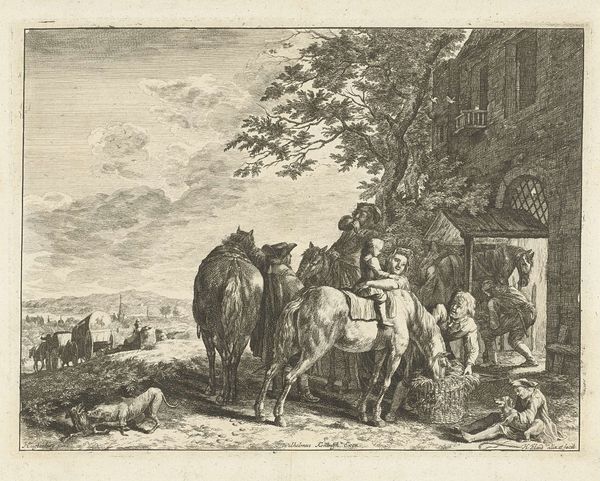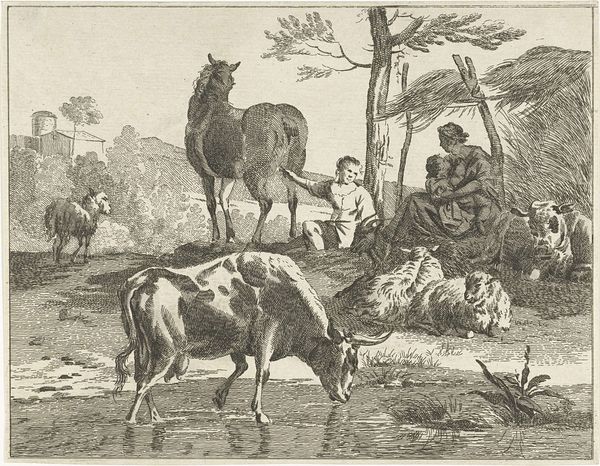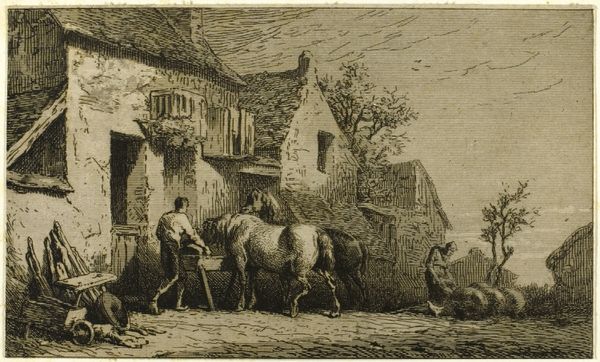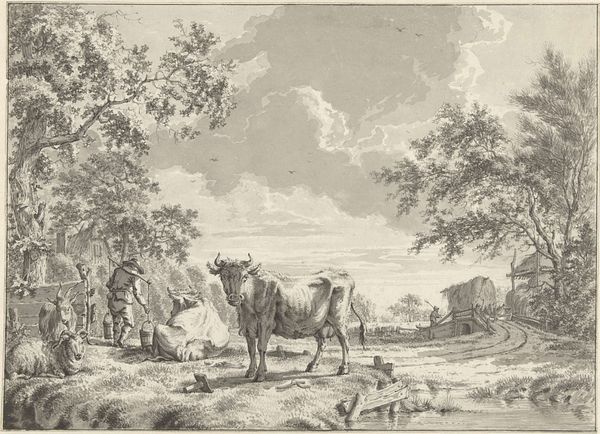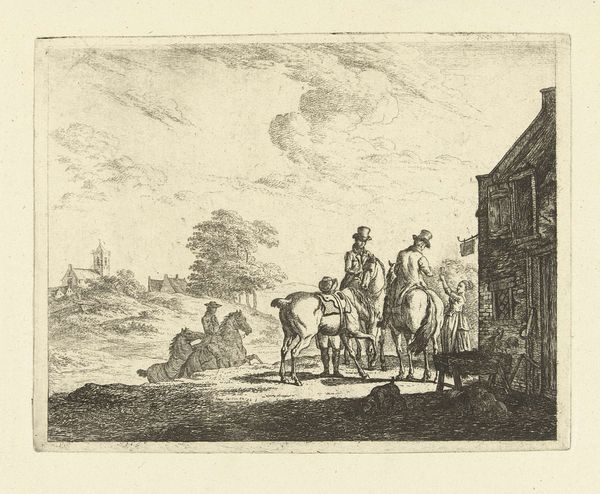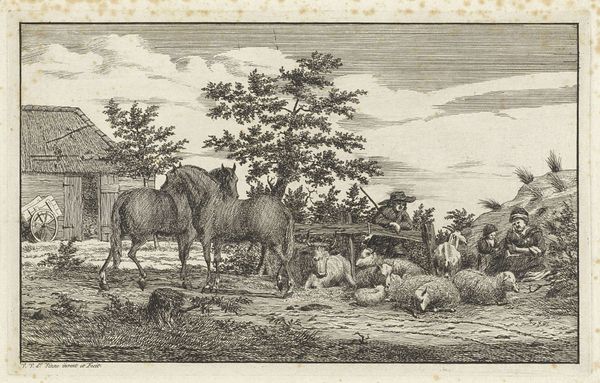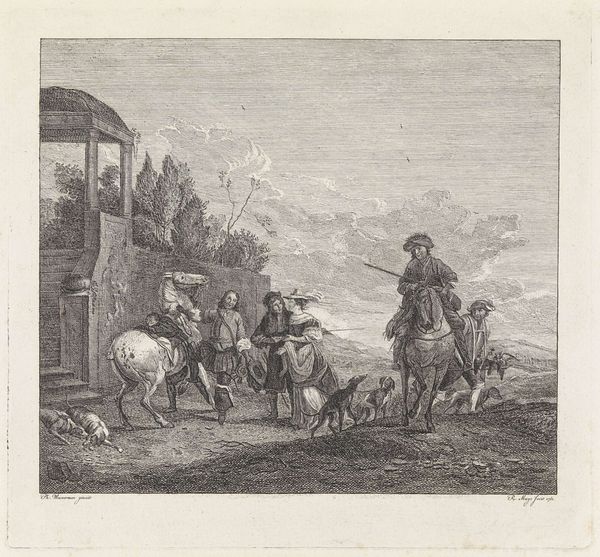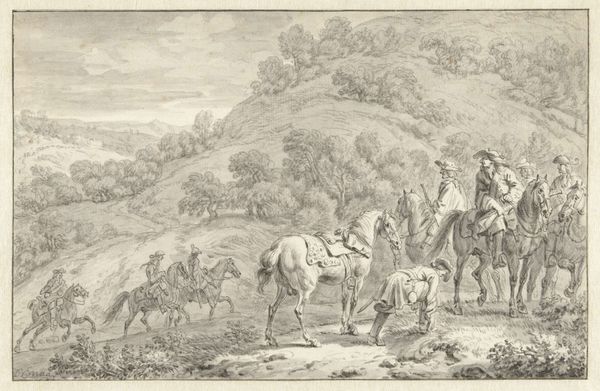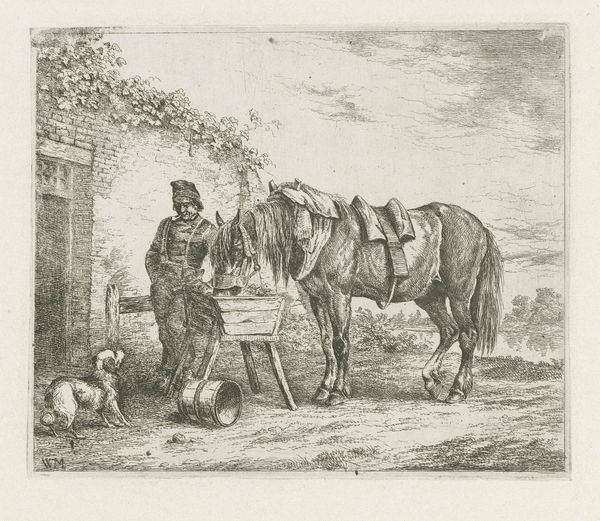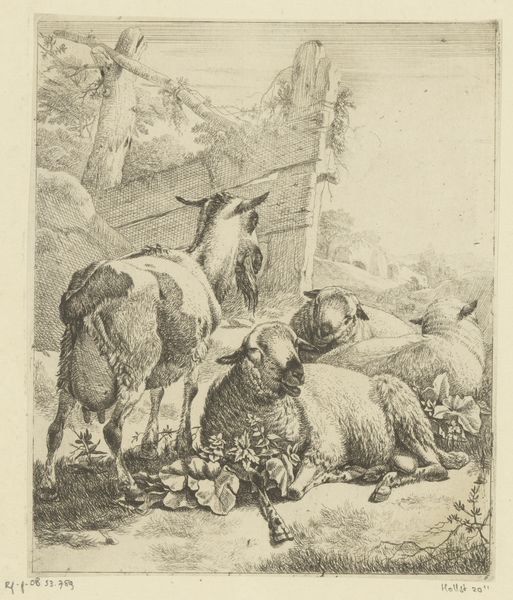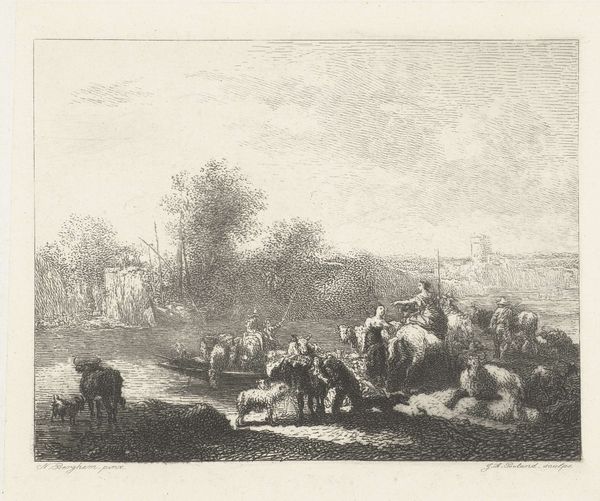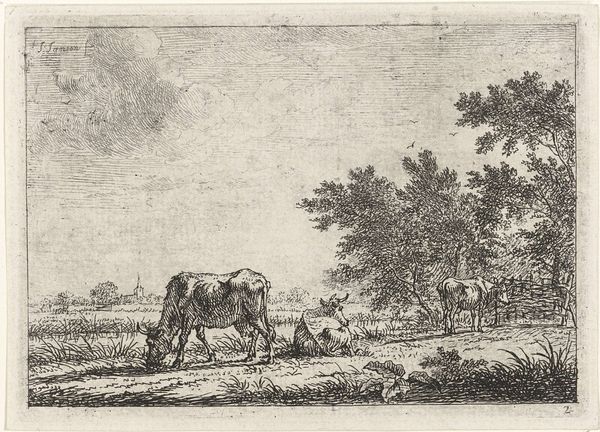
drawing, engraving
#
drawing
#
landscape
#
romanticism
#
genre-painting
#
engraving
#
realism
Dimensions: height 98 mm, width 148 mm
Copyright: Rijks Museum: Open Domain
Editor: This engraving, "Vier geiten en een schaap bij een huis," or "Four Goats and a Sheep by a House," by Johannes Mock, dates sometime between 1810 and 1884. It’s a charming scene, almost like a snapshot of rural life. What historical context is crucial for understanding a piece like this? Curator: The charm, as you say, is key. Remember this was during a rise in urbanization. Scenes like these, depicting seemingly simple rural existence, became increasingly popular, didn't they? Consider how the artwork idealizes country life for an urban audience. How do you think the depiction of these animals contributes to this idealization? Editor: I suppose it’s a way of romanticizing nature, emphasizing the pastoral and peaceful. But wouldn't a realistic portrayal include, perhaps, the hardships or realities of farming? Curator: Exactly! And that omission is precisely where the ideology lies. It's a carefully curated image, meant to evoke nostalgia and perhaps even downplay the socio-economic inequalities present at the time. Think about who commissioned and consumed these images. Editor: So, it's not just a simple drawing of animals. It reflects the politics of its time, showcasing what the elite wanted to believe about rural life, regardless of its accuracy. The very act of choosing this subject becomes a statement. Curator: Precisely. Art doesn't exist in a vacuum. What seems like a quaint scene actually speaks volumes about social anxieties and power structures of its time. Editor: I see this engraving in a completely new light. It’s not just art imitating life; it's art shaping perceptions and reinforcing social narratives. Curator: Indeed! Keep questioning what realities artworks try to depict!
Comments
No comments
Be the first to comment and join the conversation on the ultimate creative platform.

